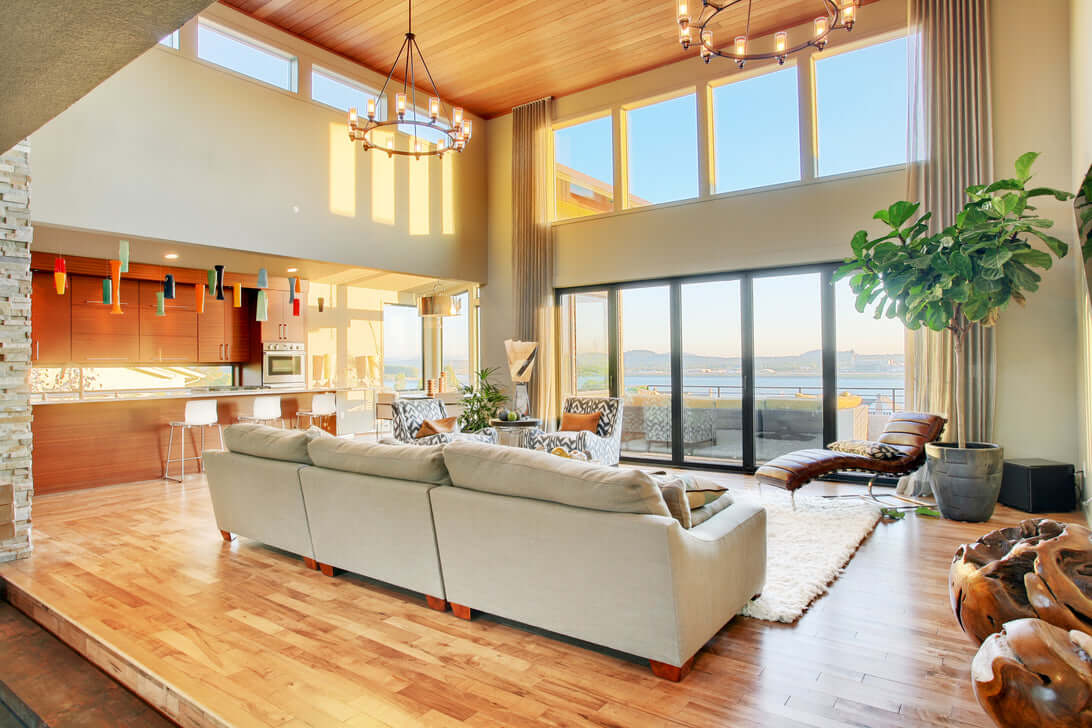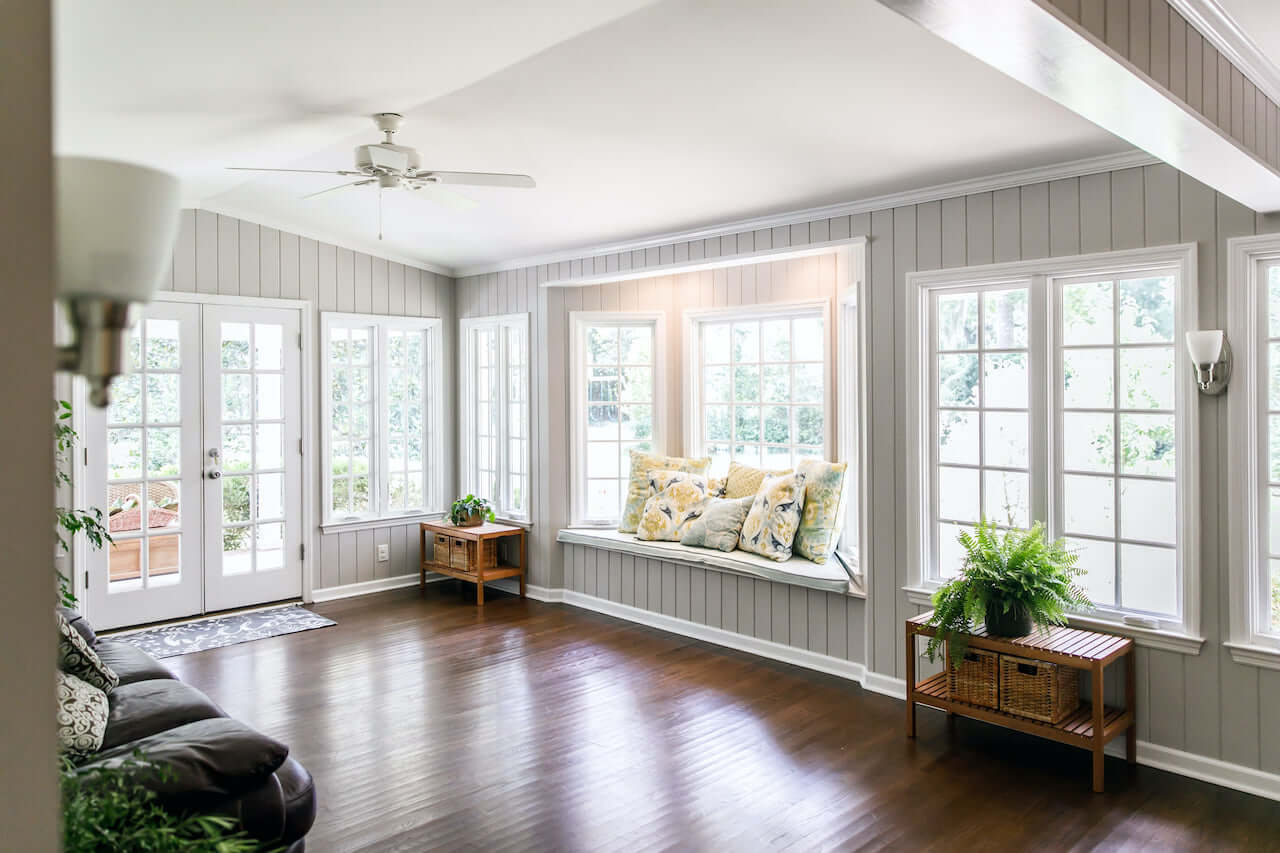
Guide to Understanding Grades of Hardwood Flooring
There is a lot to consider when shopping for new hardwood floors – wood species, plank dimensions, installation method, surface, texture, the list goes on and on. We’re here to discuss one important hardwood specification that may not be as commonly discussed as width or length: “Grade” or “Manufacturer’s Grade.”
Origin of Wood Grades Choosing the Right Grade
An important decision in the hardwood buying process is deciding among types and grades of hardwood to use. As there are many different options available.
When lumber is cut from logs the planks are sawn in one of three ways, which affects the stability and the price of the hardwood.
- Quarter sawn: cuts a log into quarters before it cuts the strips of wood to make a hardwood flooring board.
- Rift sawn: cuts a log at a different angle than quarter sawn before it cuts the wood into hardwood flooring boards.
- Plain sawn: by far the most commonly used cut containing. It contains more variations than the Quarter or Rift Sawn.
Each type of lumber is dependent upon how the log is oriented and cut at the sawmill. The result is an orientation of the growth rings on the end grain of the board and is what defines the type of lumber. The type of cut also determines the figure in a piece of wood and the wood’s mechanical properties.
Grading Hardwood Flooring
When you see the term “grade,” you probably think about performance. However, the National Hardwood Lumber Association does not grade wood by its integrity or lifespan. This grading system is for aesthetic and design classifications only.
The hardwood floor grading system determines if the wood has distinct stylistic features such as knots, mineral streaks, or wormholes. Categorizing hardwood designs by grade provides those with a keen eye for designing an easy way to shop. For instance, suppose you live in a modern home with a minimalist design and are looking for contrast with your hardwood floors. In that case, you may want to shop for a rustic grade hardwood with unique graining and knots running across its surface.
Homeowners can also enjoy the variation in color between different grades. Installation companies use these categories to streamline the shopping process by making these features clear to their customers. It’s as simple as that! Now that you know what grading means, let’s look at some of the many flooring options you can choose from.
The Pristine Choice: Clear Grade
Clear Grade wood is ideal for homeowners who want their flooring to have a uniform look across the room. Hardwood engineers grade these floors for their lack of surface features, like knots or dark spots. Manufacturers consider this grade to be one of the highest quality in the industry due to its sleek appearance.
Other grades of hardwood flooring are relatively more affordable. Despite this, homeowners and interior designers love this look for modern homes.
Added Character: Select Grade
Select Grade wood is typically less expensive than Clear Grade wood while still an excellent choice for a subtle, uniform look. This grade of flooring has distinguishing features like knots and darker spots, but they do not dominate the aesthetic. Many homeowners choose this style to display some character with their wood and tastefully offset other colors and textures in the room.
This grade of wood is a great choice for homes or businesses that want a simple look for the room. The wood still offers visual interest and pattern while promoting a sense of cleanliness and professionalism.
Select Grade is also a great choice for homes with continuous hardwood throughout from one room to the next. Homeowners can still enjoy flexibility with the color as well with Select Grade options. Features such as mineral stains and swirls are typically lighter with this grade.
Design Diversity: #1 Common Grade
For those who want a more natural wood look to their flooring, #1 Common Grade is the way to go. Subtle contrast in color, swirls, and markings set this grade apart from previously mentioned grades.
This grade of wood is natural yet not overbearing — its features dance across the wood’s grain to add visual appeal and textural variation to a space.
#1 Common Grade wood is more cost-efficient than Clear and Select grade. You can use this wood to perfect any room of the house. #1 Common Grade is an excellent style for any home without drawing too much attention to the hardwood itself.
Natural Beauty: #2 Common Grade
#2 Common Grade is perfect for showing off the natural beauty of wood. While not as intense as the rustic Cabin Grade style we’ll discuss next, this wood brings the outdoors in and creates a sense of nature in the room.

The industry categorizes this grade based on its heavier presence of swirls, mineral streaks, knots in the grain, and more. Homeowners who are looking for eye-catching, unique flooring enjoy this style. The darker textures create bold features throughout the space and grab visitors’ attention.
Customers can enjoy significantly differing patterns and preferences when browsing this style, such as Harper Floors’ European oak flooring. The possibilities are endless, and this material is relatively less costly than uniform wood such as Clear and Select Grade.
The Premier Rustic Style: Cabin Grade
Do you want your wood floors to be a design feature in itself? Say goodbye to simplicity and pick a Cabin Grade hardwood floor for your home. Rustic or Cabin Grade is the best label for this style of wood. This grade of wood fully embraces the aesthetic of natural graining and variation in hardwood.
Knots, wormholes, mineral stains, and abstract patterns pepper this grade of hardwood. These unique features in turn actually help hide potential damage to your floors. Homeowners are smart to use this grade of wood in areas of the house that are vulnerable to stains and damage, such as basements and kitchens.
Rustic home designs have become increasingly popular with both rural and urban households. Contemporary or modern farmhouse looks are achieved using rustic grade floors in natural tones, perfectly complementing other chic accents in the home.
Choosing the Right Grade
Still unsure of which hardwood grade option to choose? Talk to the experts who can help! At Harper Floors, we work with both homeowners and industry professionals to find the perfect hardwood for each unique project. From educating about the differences between engineered and solid hardwood floors to the nuances in comparing different hardwood grades, our team is here to assist. To learn more about the grades of hardwood flooring and our product selection, contact us directly at 1-888-807-2704 or email us at info@harperfloors.com!



